Material in Biology
In biology, the term "material" refers to the substances that make up living organisms and their environment. These materials can be classified into two main categories: organic and inorganic materials.
Organic Materials
Organic materials are carbon-based compounds that are essential for life. These include:
- Carbohydrates: Organic compounds that serve as a source of energy and structural components in cells.
- Proteins: Large molecules composed of amino acids that perform various functions such as catalyzing chemical reactions, providing structure, and transporting molecules.
- Lipids: Hydrophobic molecules that serve as energy storage, structural components of cell membranes, and signaling molecules.
- Nucleic Acids: Biological macromolecules that store and transmit genetic information, such as DNA and RNA.
Inorganic Materials
Inorganic materials are non-living substances that are important for biological processes. These include:
- Water: A universal solvent that is essential for various biochemical reactions, maintaining cell structure, and regulating body temperature.
- Minerals: Inorganic elements such as calcium, potassium, and iron that are required for bodily functions, including bone formation, nerve function, and oxygen transport.
- Gases: Substances such as oxygen and carbon dioxide that play critical roles in cellular respiration and photosynthesis.
Study Guide
To effectively study the topic of material in biology, consider the following key points:
- Learn the chemical structures and functions of organic materials such as carbohydrates, proteins, lipids, and nucleic acids.
- Understand the importance of water as a solvent, its role in maintaining homeostasis, and its significance in biological systems.
- Explore the essential minerals required for human health and their roles in various physiological processes.
- Examine the significance of gases, particularly oxygen and carbon dioxide, in cellular respiration and photosynthesis.
- Consider real-life examples and applications of materials in biological contexts, such as nutrition, metabolism, and environmental interactions.
By mastering the concepts of organic and inorganic materials in biology, you will gain a deeper understanding of the fundamental building blocks of life and their crucial roles in biological systems.
.◂Biology Worksheets and Study Guides High School. Human biology I
Worksheet/Answer key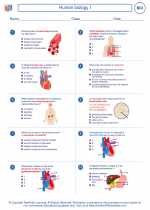 Human biology I
Human biology I  Worksheet/Answer key
Worksheet/Answer key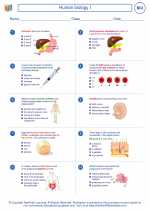 Human biology I
Human biology I  Worksheet/Answer key
Worksheet/Answer key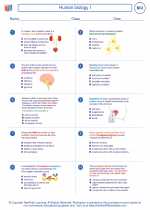 Human biology I
Human biology I  Worksheet/Answer key
Worksheet/Answer key Human biology I
Human biology I  Vocabulary/Answer key
Vocabulary/Answer key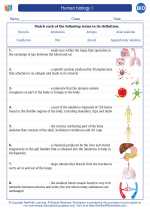 Human biology I
Human biology I  Vocabulary/Answer key
Vocabulary/Answer key Human biology I
Human biology I  Vocabulary/Answer key
Vocabulary/Answer key Human biology I
Human biology I  Vocabulary/Answer key
Vocabulary/Answer key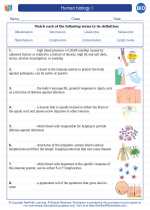 Human biology I
Human biology I  Vocabulary/Answer key
Vocabulary/Answer key Human biology I
Human biology I  Vocabulary/Answer key
Vocabulary/Answer key Human biology I
Human biology I  Vocabulary/Answer key
Vocabulary/Answer key Human biology I
Human biology I 

 Worksheet/Answer key
Worksheet/Answer key
 Worksheet/Answer key
Worksheet/Answer key
 Worksheet/Answer key
Worksheet/Answer key
 Vocabulary/Answer key
Vocabulary/Answer key
 Vocabulary/Answer key
Vocabulary/Answer key
 Vocabulary/Answer key
Vocabulary/Answer key
 Vocabulary/Answer key
Vocabulary/Answer key
 Vocabulary/Answer key
Vocabulary/Answer key
 Vocabulary/Answer key
Vocabulary/Answer key
 Vocabulary/Answer key
Vocabulary/Answer key

The resources above cover the following skills:
LIFE SCIENCE (NGSS)
From Molecules to Organisms: Structures and Processes
Students who demonstrate understanding can:
Develop and use a model to illustrate the hierarchical organization of interacting systems that provide specific functions within multicellular organisms.
Plan and conduct an investigation to provide evidence that feedback mechanisms maintain homeostasis.